Don’t leave access point placement to chance. Let a Wi-Fi planner do all the hard work for you.
If you are planning to install or upgrade your business Wi-Fi, you should take advantage of Wi-Fi planners, which are predictive tools designed to place your access points where they will likely get the best Wi-Fi coverage.
Network installation companies often use Wi-Fi planners that apply algorithms using your floor plan and a number of other factors—wall materials and obstacles—to determine how many access points you need and where to place them.
There are four essential things a Wi-Fi planner can do to help make building a business network much easier.
1 Simulating Your Business Environment
You don’t want to play hit-and-miss with the placement of your network gear. That’s why it’s important to plan your network virtually before setting it up in reality.
Wi-Fi planners allow you to upload the floor plan of your business for analysis. You can then mark the dimensions of the building or property line and set the scale. Later, when you place access points throughout the floor plan, you’ll get an accurate picture of the range of each access point.
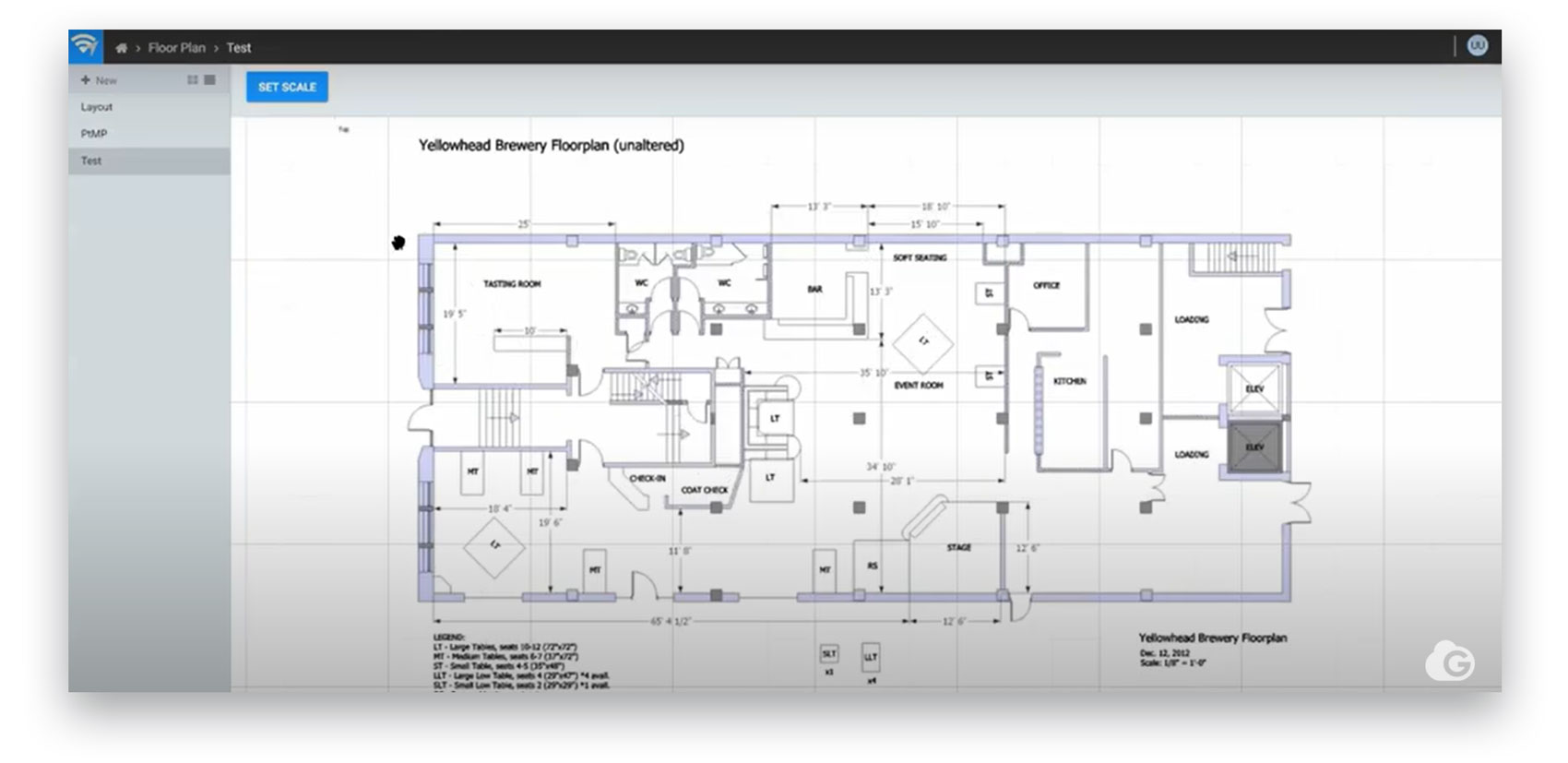
Within the Wi-Fi planner, you can measure the dimensions of the building(s) and mark all walls, windows, and doors with the material they are made of. This is important since the density and thickness of a wall can hinder Wi-Fi signals. In addition, outdoor APs can be hindered by plants, trees, water fountains, and other outdoor fixtures. Often, in those cases, the APs simply need to be placed higher than the obstacles to achieve a clear line-of-sight connection.
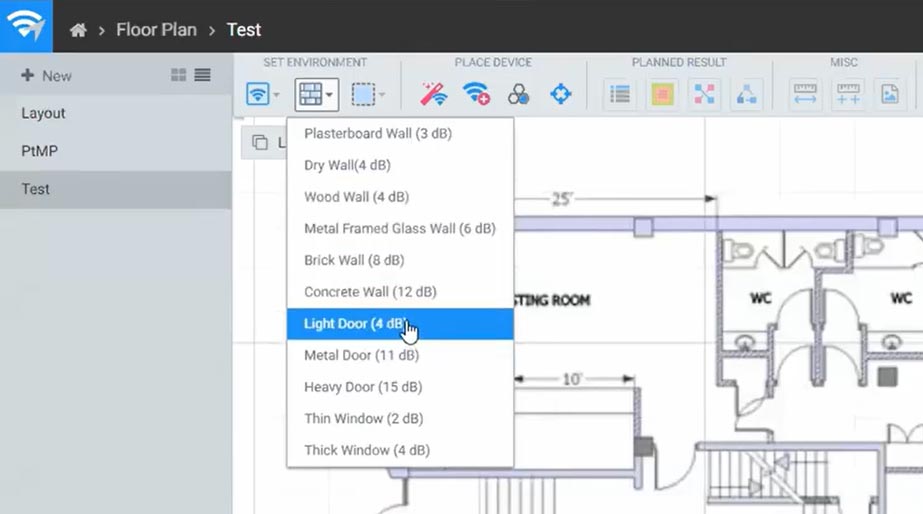
You will then select the Wi-Fi area, which can cover an entire building or extend into your outdoor area if you intend for your guests to be able to access internet anywhere on the grounds.
2 Auto-Placing Access Points
After marking your floor plan, you can select and place access points strategically throughout the building or property. But many Wi-Fi planners have a helpful wizard that will automatically place access points for you in the most likely optimal places. After the wizard has run its course, you can naturally rearrange, add, or subtract access points to see if it can improve coverage.
Note: Be sure to select Wave 2 access points since they are next generation wireless technology designed to fit any network design.
Check out our 24- and 48-port PoE+ switches, which provide powerful, low-cost connection for access points and all network devices.
Access points that operate in the 2.4 GHz band have longer range but transmit less data than those on the 5 GHz band. Which spectrum you use can determine how many access points you’ll need and where they should be placed.
3 Creating Heatmaps
Once access points have been added to your floor plan, the Wi-Fi planner will create a heatmap that illustrates the signal strength radiating from each access point.
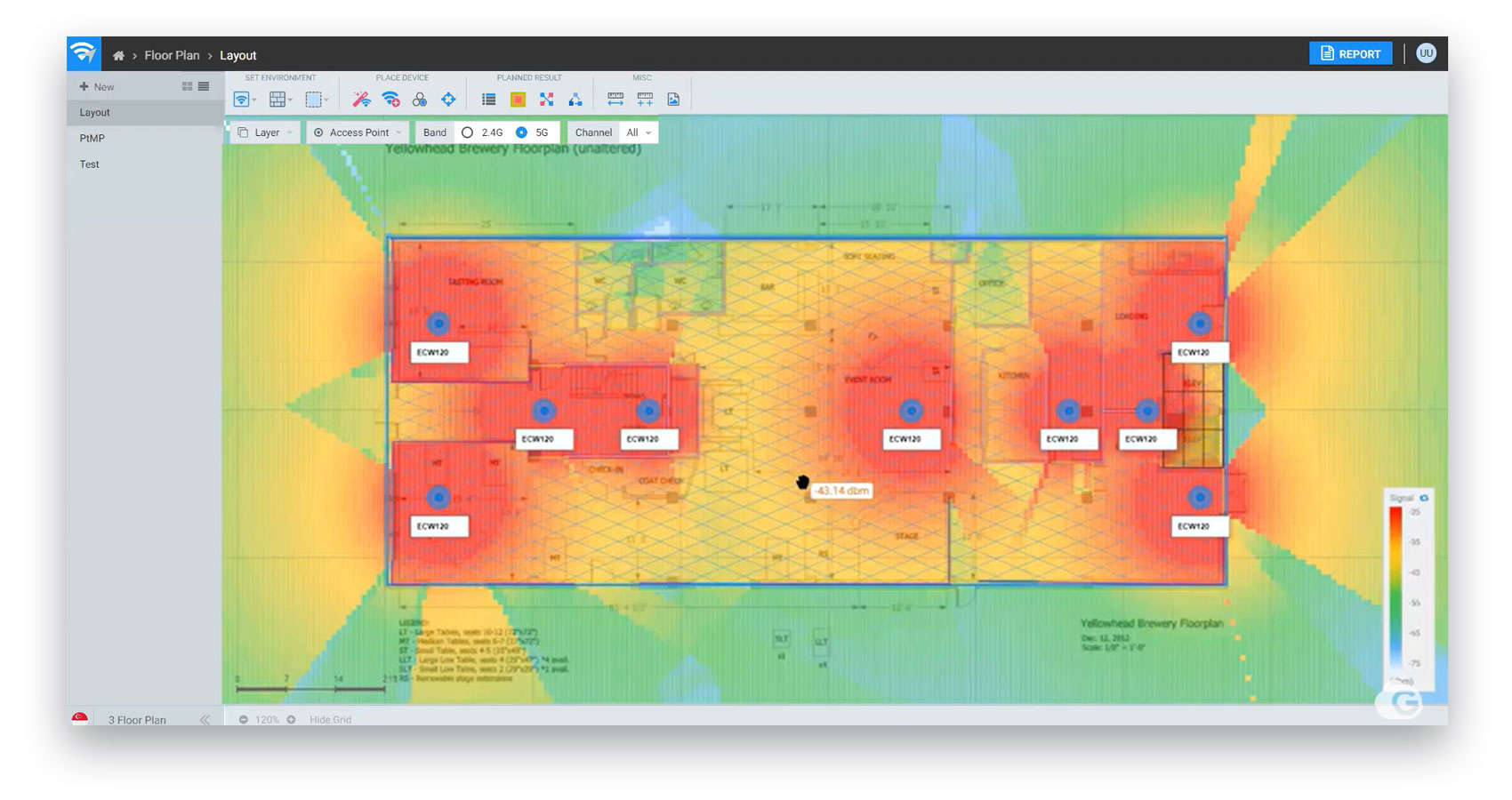
These access points have been assigned to the 5 GHz band, which means they will transmit more data but for shorter distances.
As mentioned before, the 2.4 GHz band carries less data for farther distances while the 5 GHz spectrum carries more data for shorter distances. Compare the 5 GHz deployment above with the 2.4 GHz deployment below.
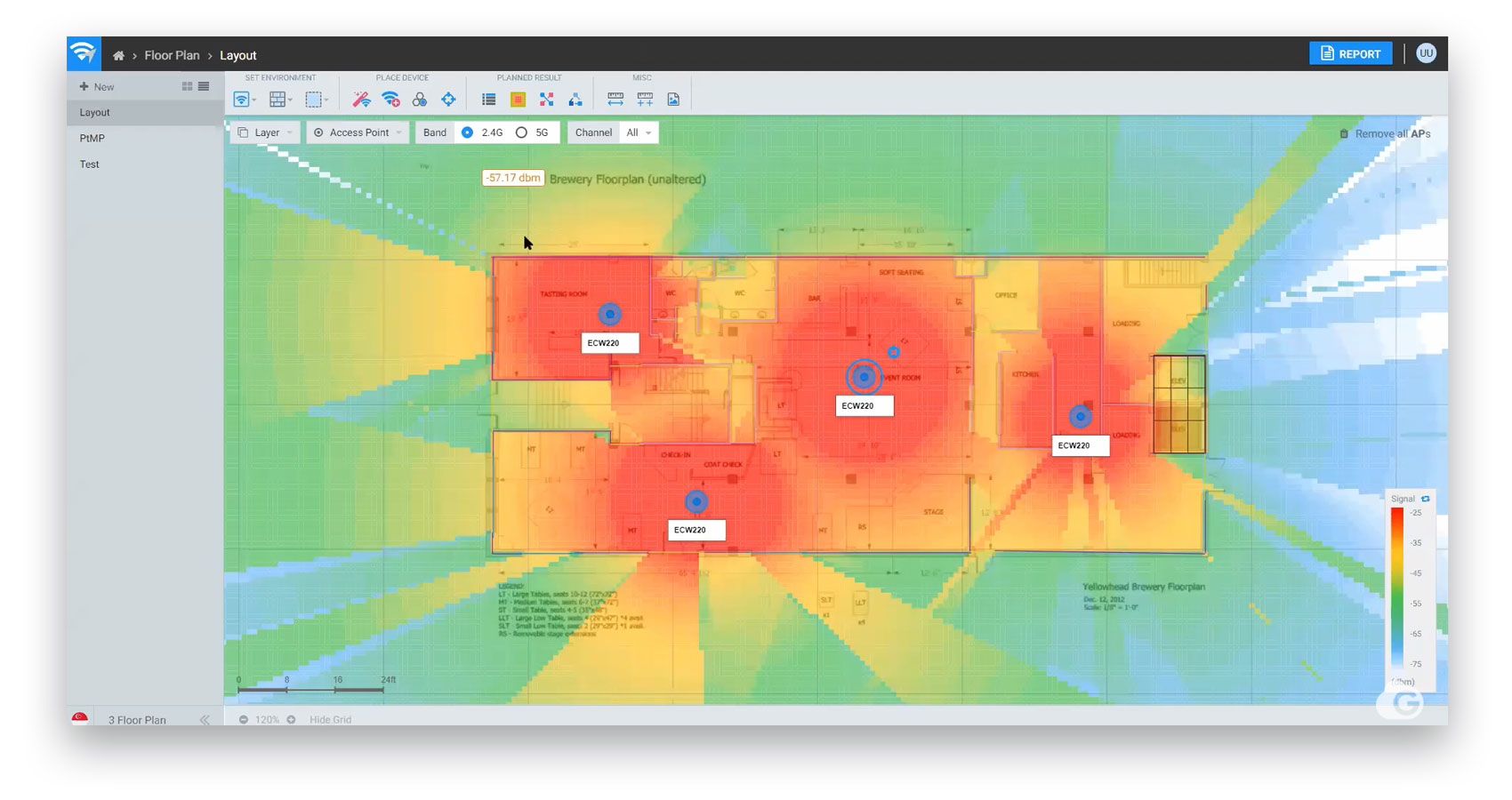
You can also load Google Maps into the WiFi planner, find your property, and deploy outdoor access points with ease. You can select the type of access point and its location as well as the height of the access point as can be seen in the figure below:
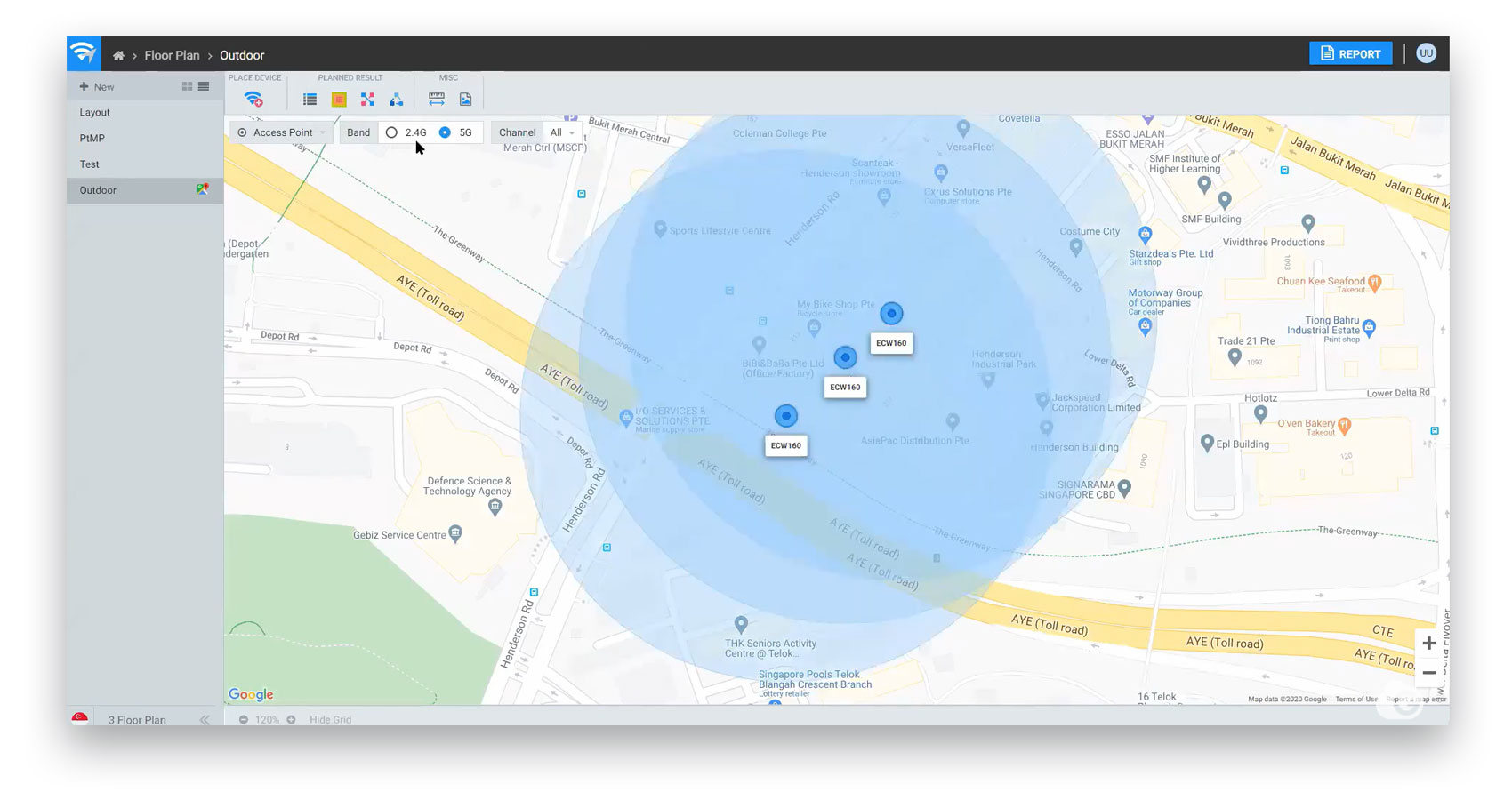
You can further fine-tune any deployment (indoor or outdoor) by clicking on individual access points and adjusting the transmit power, signal strength, and other settings.
4 Customizing Reports
After you have optimized your design, many Wi-Fi planners can generate instant, professional reports—ready for you to share with colleagues or business partners so that you can make intelligent decisions about what network deployment and upgrade options are best for you.
Ultimately, once your network has been installed and deployed, the network installation company will conduct a site survey to make sure all access points and other devices are working properly. This is the step that puts a Wi-Fi planner to the test.
One of the top Wi-Fi planners available today comes compliments of EnGenius Technologies, a multinational networking company known for delivering future-proof networking solutions for all businesses.
Contact us today if you are interested in learning more about our ezWiFi Planner as well as our suite of indoor and outdoor access points, switches, bridges, and wireless phone solutions. Our partners can get you started!
Source link
